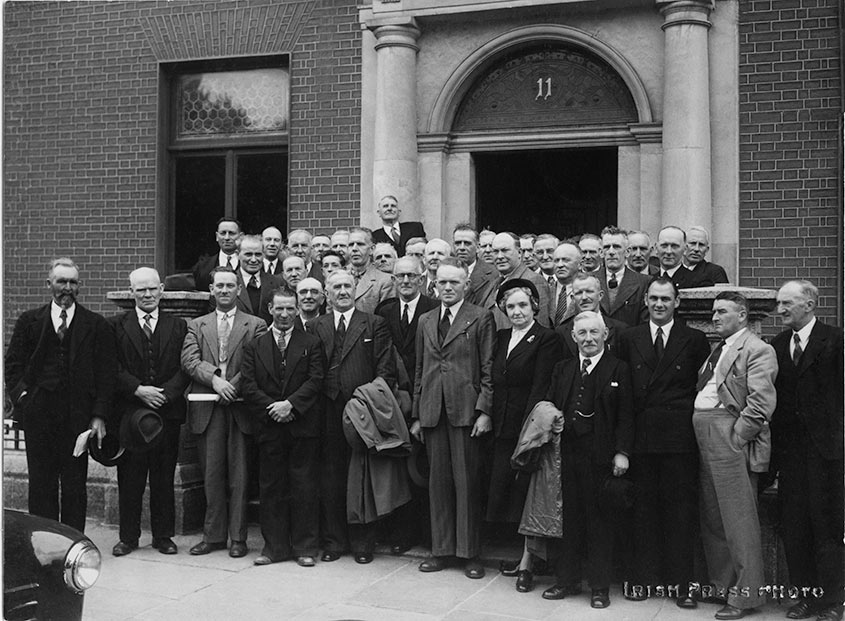1921
100 Years of Women in Irish Politics and Public Life
The Pop-Up Museum showcasing 100 years of Women in Politics and Public Life was launched in December 2018 to mark the centenary of the introduction of voting rights for women.
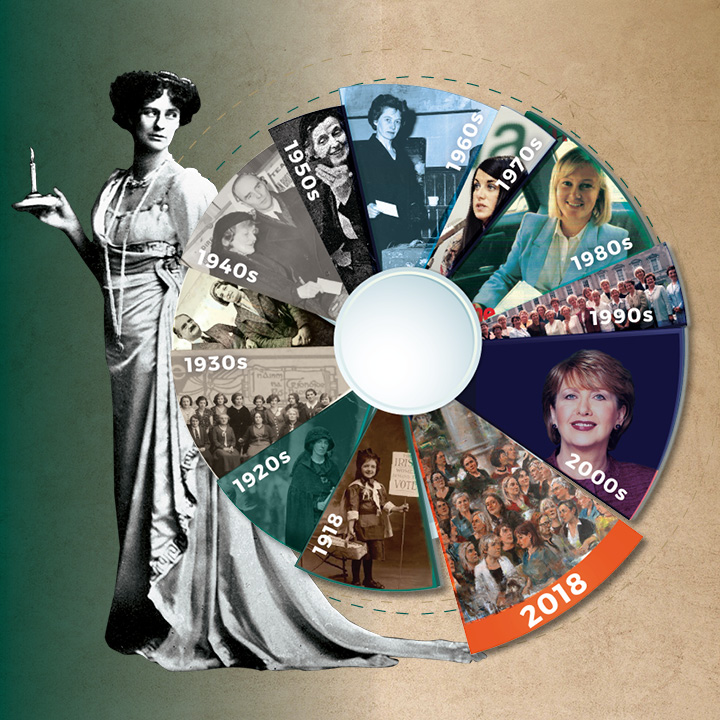
1921
The Pop-Up Museum showcasing 100 years of Women in Politics and Public Life was launched in December 2018 to mark the centenary of the introduction of voting rights for women.

This 100 Year Journey was compiled to highlight the complexity and diversity of women’s experience over the past 100 years.
This is not a definitive list but it is intended that this will be a living document and we encourage people to engage with the project and provide suggestions for inclusion.
During the 1930s there was significant political change throughout Europe and in Ireland. The country experienced great political flux and transformation and women here remained politicised. Women played an active role in the growth of the Fianna Fáil party at local Cumann level and in the popularity of The Irish Press newspaper. In 1932 the Army Comrades Association, made up of retired members of the Free State Army, expanded its membership and changed its name, firstly to the Civic Guard, then to Youth Ireland and later again The League of Youth. Because of the uniforms they wore this organisation was commonly known as the Blue Shirts. The ‘ladies division’ of the association was commonly known as the Blue Blouses.
Interest in Communism and Soviet Russia was evident among many of Ireland’s female political thinkers and activists. Friends of Soviet Russia members Hanna Sheehy-Skeffington and Helena Molony amongst others made an extensive tour of Russia in 1930. Far-left parties of the 193Os included the Socialist Republican Party, Saor Éire founded in 1931 with women in its Executive. In 1933 the Revolutionary Workers’ Groups, including many women members, became the Communist Party of Ireland. Nora Connolly O’Brien, daughter of James Connolly, was one of the key organisers of another pro-communist organisation, The Republican Congress.
Women were active within the wider labour movement. Louie Bennett became the first woman President of the Irish Congress of Trade Unions in 1932.
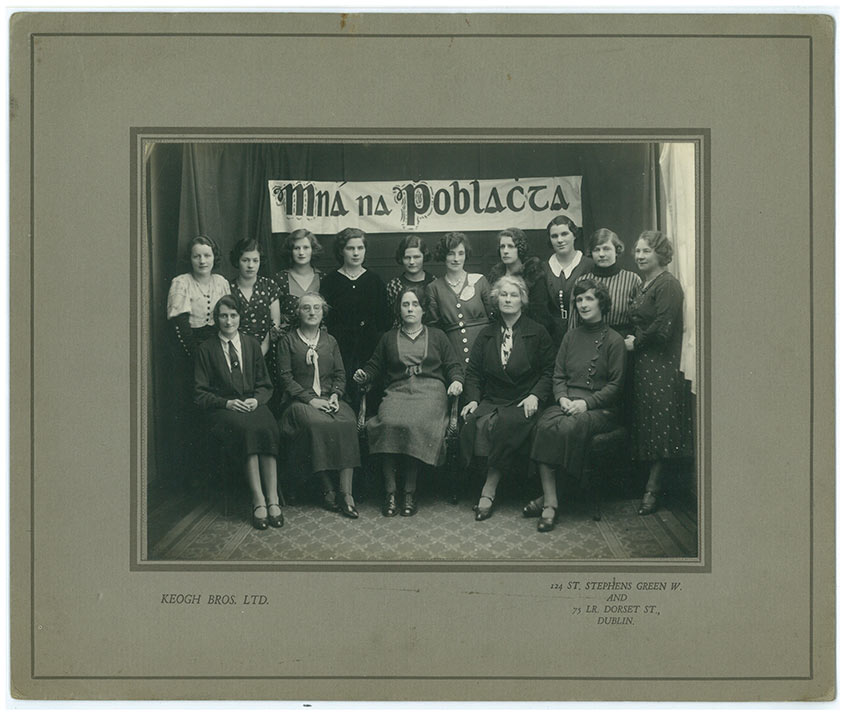
Cumann na mBan continued as an organisation but there was a split in 1933. Mná na Poblachta was formed with a core belief that the members of the 2nd Dáil were the legitimate government.
The Cumann na nGaedheal Government brought in the Constitution (Amendment) No. 17 Act (1931) which authorised the establishment of a Military Tribunal and the proscription of dozens of organisations. Tensions remained in the country and many former combatants (both men and women) of the War of Independence and the Civil War still held their weapons.
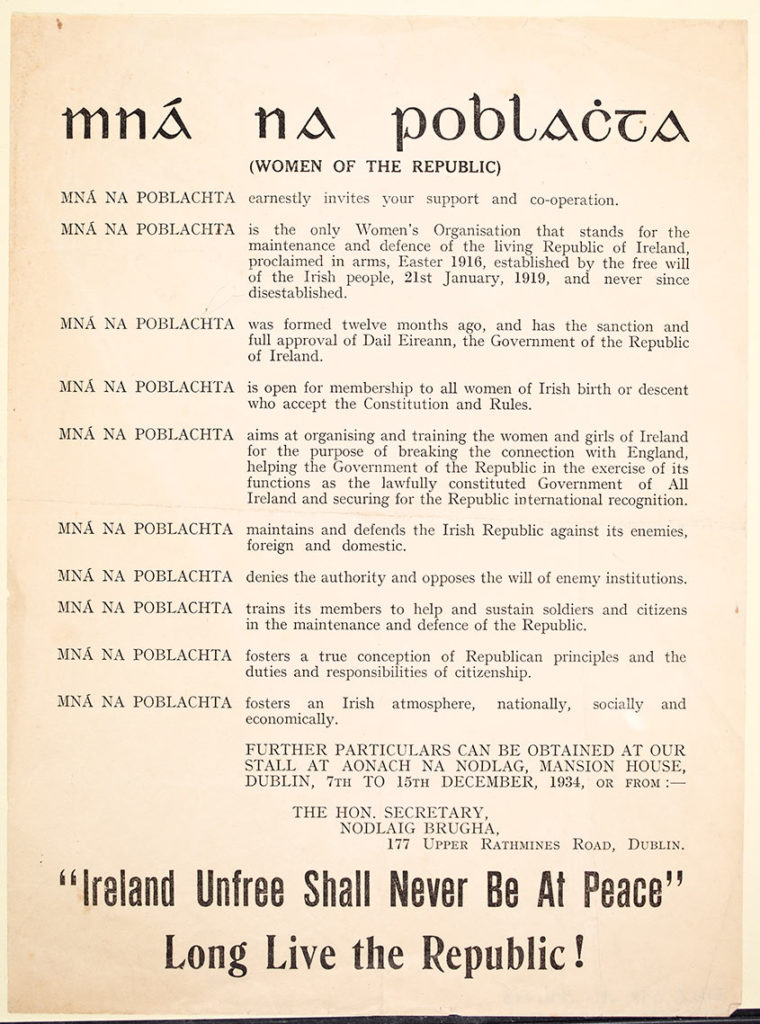
In February 1932, Patrick Reynolds T.D. from Leitrim was shot dead, in an altercation that took place when he was electioneering for the general election of 16 February 1932. Deputy Reynolds had served in Dáil Eireann as a Cumann na nGaedheal TD for Sligo-Leitrim for five years having been successfully returned in three general elections during that time.
Mary Reynolds stood for election in place of her husband. She was the fifth Clann na nGaedheal candidate in a thirteen-seat constituency and was elected, joining Margaret Collins-O’Driscoll on the back benches.
Fianna Fáil led a Government formed in coalition with the Labour Party. There were no women on the Government benches.
The influence of the Roman Catholic Church had been growing in Ireland from the late 19th Century. The Vatican encouraged church building and the expansion of the parish structure. Religious Orders ran primary & secondary schools and teacher training colleges. As well as hospitals, hostels, reformatories and a welfare system which included Orphanages, Industrial Schools, ‘Magdalene Laundries’ and Mother & Baby homes.
In the early 1930s the Irish Bishops publicly stated that Irish Catholics should not play a part in activities of the Republican movement or Communist organisations (which were against organised religion).
The International Eucharistic Congress took place in June 1932. It was a major event supported by the State. Thousands travelled. While there were activities which welcomed people to worship together there were also separate events for men and women and children. Ladies Day was on 24 June and a mass took place in the Phoenix Park which was attended by an estimated 200,000.
Organisations for Catholics grew in number and strength. The Legion of Mary, founded the previous decade to undertake visits to sick women in Dublin, had by the 1930s expanded its reach to apostolic works outside Ireland. Catholic Action was founded in 1933 – it had a sub-group for women.
Sodalities with devotion to Mary were popular in schools and parishes throughout the country. Both men and women were members of the Pioneer Total Abstinence Association (abstinence from alcohol) and it became the most successful of the country’s lay faith movements.
Following the election of 1933 there were three women in the 8th Dáil, Bridget Mary Redmond for Cumann na nGaedheal and Helena Concannon and Margaret Mary Pearse for Fianna Fáil. Cumann na nGaedheal’s out-going TDs Mary Reynolds and Margaret Collins-O’Driscoll failed to get elected.
Éamon de Valera had decided on a snap election in order to obtain a majority but fell just short with 77 seats. However, following subsequent bye-elections Fianna Fáil did achieve a majority during the 8th Dáil. De Valera began his policy of dismantling the Treaty with the refusal to pay the land annuities owing to the British Government under the terms of the Treaty. At the outset this policy was popular among many as there was a worldwide recession. However, it started what became known as the Economic War with Britain which lasted until 1938. Fianna Fáil also introduced legislation and secured passage of the Constitution (Removal of the Oath) Act 1933.
Éamon de Valera had encouraged fifty-four-year-old Helena Concannon, BA MA, to enter politics by standing for election for the National University of Ireland. She served in the Dáil until that seat was abolished, thereafter she was a Senator. A graduate of the Royal University of Ireland, she was described by contemporaries as ‘brilliantly intelligent’. She was a prolific author and historian of Irish women in the Catholic Church. In 1929 she was awarded a D.Litt for her ‘outstanding contribution to historical knowledge’.
Margaret Mary Pearse succeeded her mother in the Dáil in the 1933 general election, the year after her mother’s death. She also took her mother’s place on the Executive of Fianna Fáil.
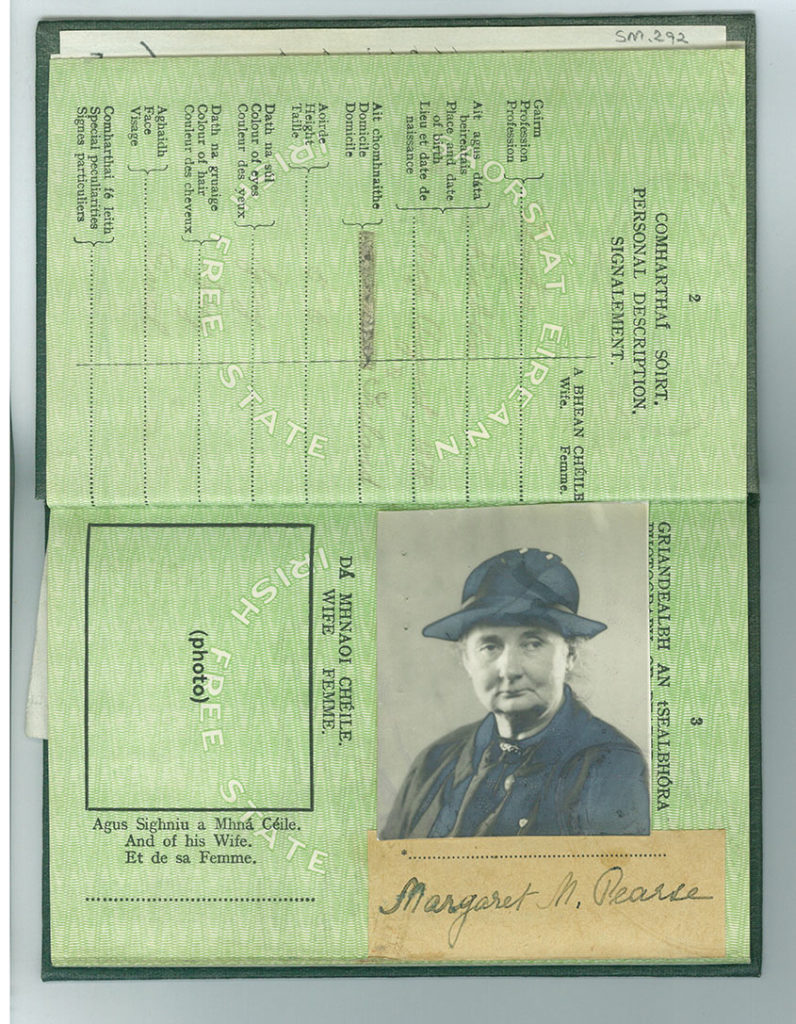
Much to the surprise of family and friends (who knew her as Tiny) Bridget Redmond agreed to stand as a candidate in the general election called for 24 January 1933. She was introduced to the voters ‘as the widow of the late distinguished Captain Redmond’. There were families who would ‘only vote Redmond’ and she took the first seat in Waterford City, receiving 6,849 votes.
In the 1930s under Fianna Fáil Governments there were a number of changes to legislation specifically or significantly affecting women. The Department of Education stipulated that all women newly employed as national school teachers from 1933 had to resign their jobs on marriage. In 1935 the Employment Act extended the marriage bar to all women Civil Servants. (It was implemented in other countries as a measure brought in because of economic depression).
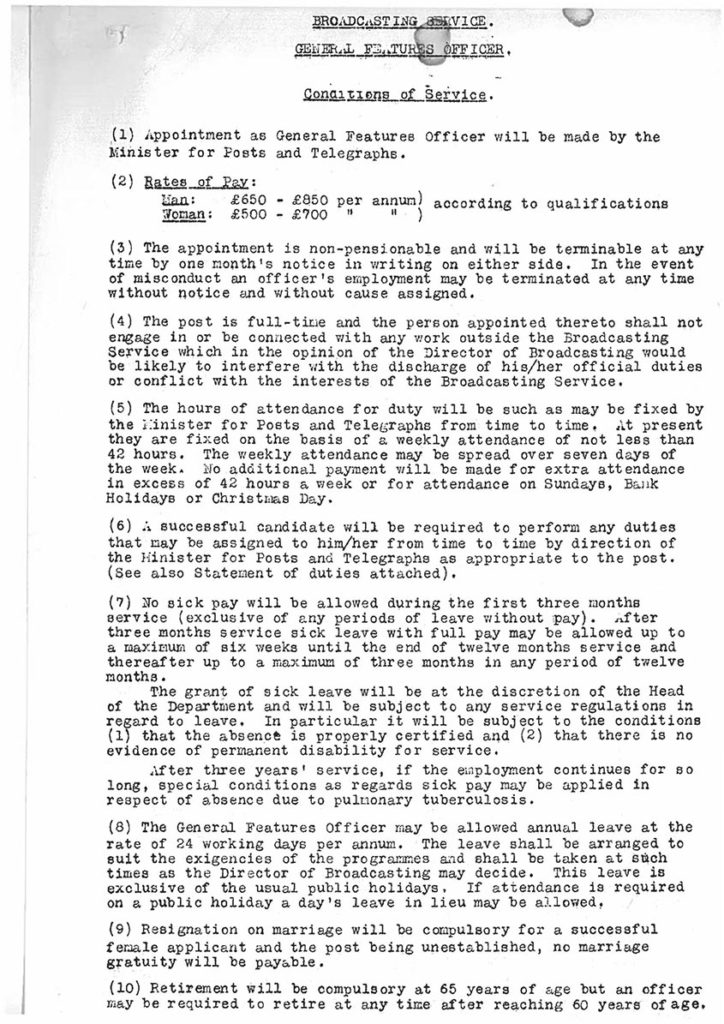
This act prohibited the supply of contraceptives. They could not be sold, advertised or imported.
This act was introduced as a measure to improve working conditions, but it also controlled the employment of women and young people. Under Section 16 the Minister for Industry and Commerce could control and restrict the employment of women in industry. There was a directive that forbade employers to have more female than male workers unless a supporting ministerial order was made.
The 1937 Constitution created the positions of Taoiseach, Tánaiste and a President as the Head of State – a Republic in all but name. It re-established a Senate to be known as the Seanad. Margaret ‘Loo’ Kennedy was appointed to the Seanad by Taoiseach Éamon de Valera. Under the new structure which allowed for senators to be elected via panels, Helena Concannon, Linda Kearns McWhinney and Margaret Pearse were elected.
Kathleen Clarke made known her unhappiness with the 1937 Constitution by resigning from the Tom Clarke Cumann of Fianna Fáil. She did not resign from the Executive of the Party. She lost her seat in the old Senate when it was abolished and did not secure a seat in the Seanad established by the new Constitution.
In 1939 Kathleen Clarke was elected Lord Mayor of Dublin, the first woman elected to any mayoralty in Ireland. She held the office for two terms until 1941. She did not seek re-election for health reasons. Kathleen refused to wear the Lord Mayor’s Chain, which had been presented by William III better known as King William of Orange and bearing his profile. She used the Chain of Conscience.
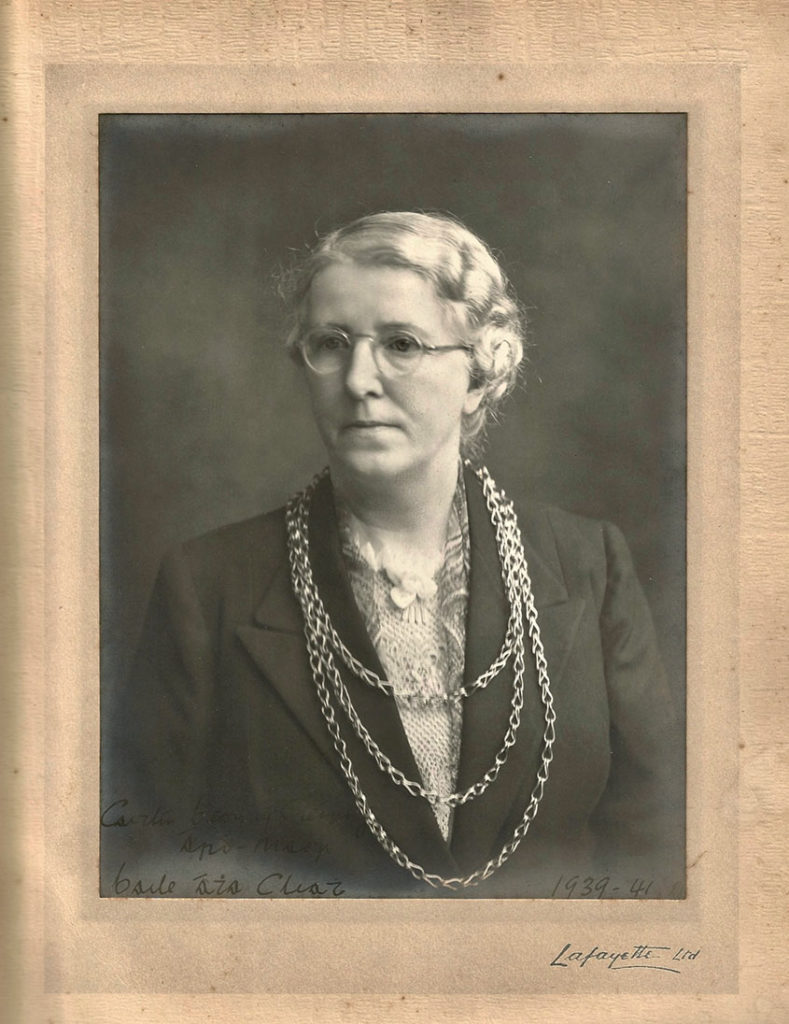
Fifty-three-year-old Bridget Mary Rice (née Henaghan) was elected to serve in the 10th Dáil in 1938 replacing her husband Fianna Fáil TD Eamon Rice who had died the previous November as a result of a heart attack. Representing Monaghan she was the only woman on the Government Benches in the 10th Dáil Eireann.
